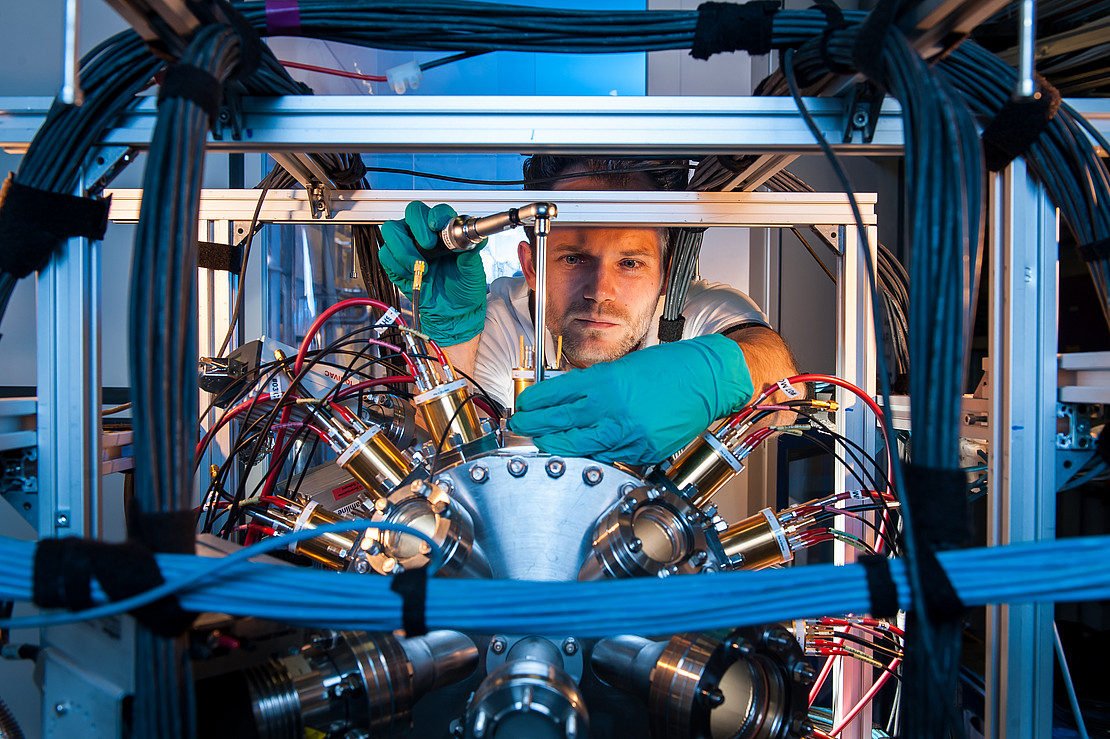This page contains automatically translated content.
Success for research team: X-ray laser provides insight into short-lived atomic system
 Image: European XFEL
Image: European XFELIlchen is a physicist and conducts research simultaneously at the University of Kassel and the XFEL. Recently, together with Dr. Tommaso Mazza (EuXFEL) and a team of international scientists from Germany, Sweden, the U.S., and Russia, he performed an experiment that for the first time allows direct measurement of an extremely short-lived atomic system.
To do this, the researchers bombarded neon atoms with ultrashort X-ray pulses and studied the atoms using high-resolution electron spectroscopy. This allowed them to explore for the first time the structure of neon atoms directly after absorption of a high-energy X-ray photon.
This state, in which one of the two most strongly bound electrons has been shot out of the atomic inner shell, is very short-lived - 2.4 millionths of a billionth of a second (femtoseconds) - and typically 'relaxes' after this time with the emission of another, less strongly bound electron. This process is named after the French scientist Pierre Auger and is called the 'Auger process'.
"Due to the unique characteristics of the European XFEL, it was now possible for the first time to release the second remaining inner-shell electron from its bond before the Auger process takes place, in order to send it into the newly formed structure as an observer. The resonances made visible in this way - comparable to suddenly re-strung strings of a guitar - decipher the exact nature of the strongly transient system, which is then quasi hollow in this state," Ilchen describes.
Possible findings for avoiding radiation damage
He explains what is special about this study: "The time window in which we had to perform a complete map of this extremely short-lived structure, i.e. before the atom drastically changes again due to the Auger effect, can be illustrated as follows: Imagine a motion picture film with a conventional frame rate of 50 frames per second that depicts the duration of the entire history of mankind. In such a monumental film, a single camera frame would be equivalent to the duration of the process in seconds, which we had to undercut."
Ilchen is excited that the Small Quantum Systems (SQS) instrument of the EuXFEL can now be used to study such processes: "It is a unique strength of the European XFEL that one can not only show such a study as an example, but even create entire 'maps' of such systems in an amazingly short time."
The demonstration of such a method is the prelude to further studies of short-lived states of matter after X-ray absorption, which represent the first step in a complex variety of structural and electronic changes. This may conceivably provide new insights into the workings of nature with respect to the prevention of damage by high-energy radiation.
Catalytic processes and fundamental processes of life such as photosynthesis could also benefit greatly from the blueprints of similar initial processes that can now be created. In light of the Kassel Collaborative Research Center 1319 on Dynamics in Chiral Systems, it is particularly exciting to now have access to this first step of such dynamics.
"The generation, control and efficient study of short-lived exotic electronic states is a core topic for the SQS instrument at the European XFEL, which was also recently discussed in a paper in the journal Science."
Original publication Physical Review X:
https://journals.aps.org/prx/abstract/10.1103/PhysRevX.10.041056
Link to the article in Science
https://science.sciencemag.org/content/369/6511/1630.abstract
Contact
Dr. Markus Ilchen
Institute of Physics // Experimental Physics IV
Heinrich-Plett-Str. 40
34132 Kassel
Email: ilchen[at]physik.uni-kassel[dot]de